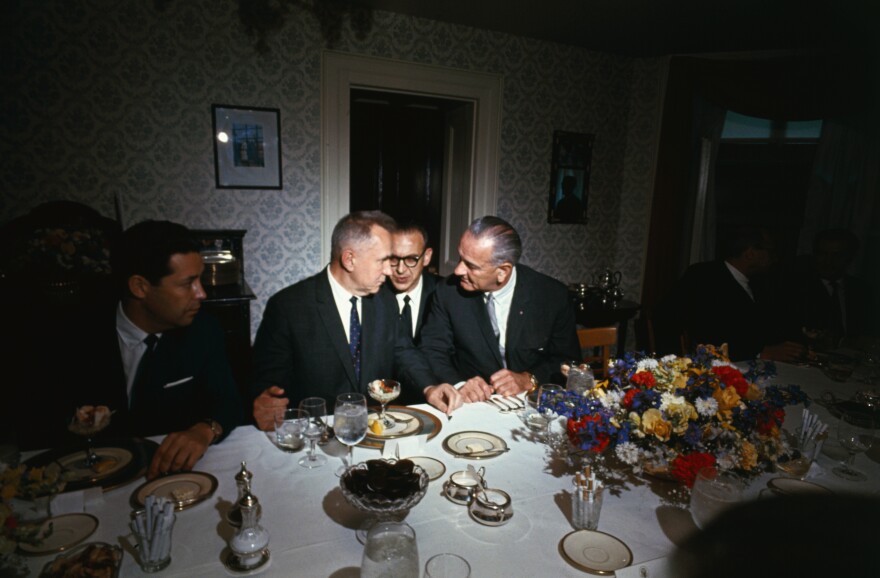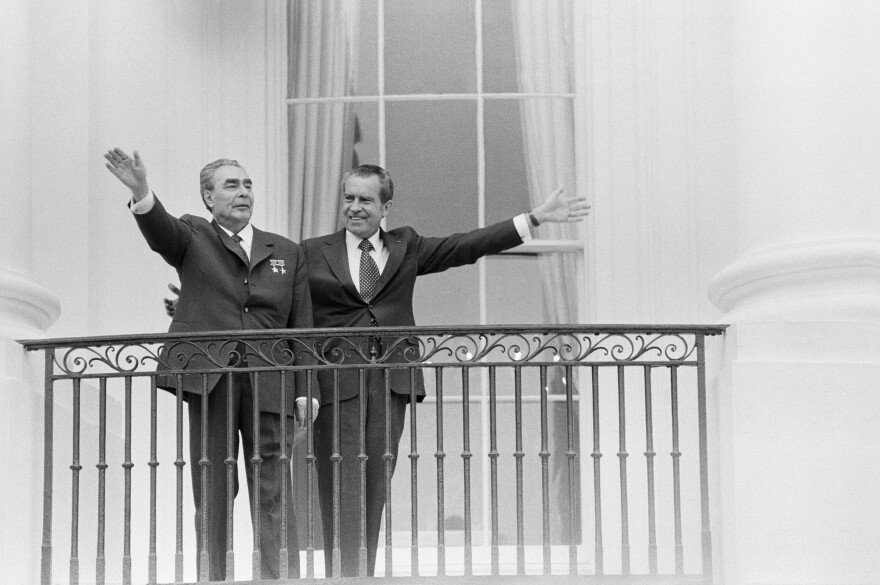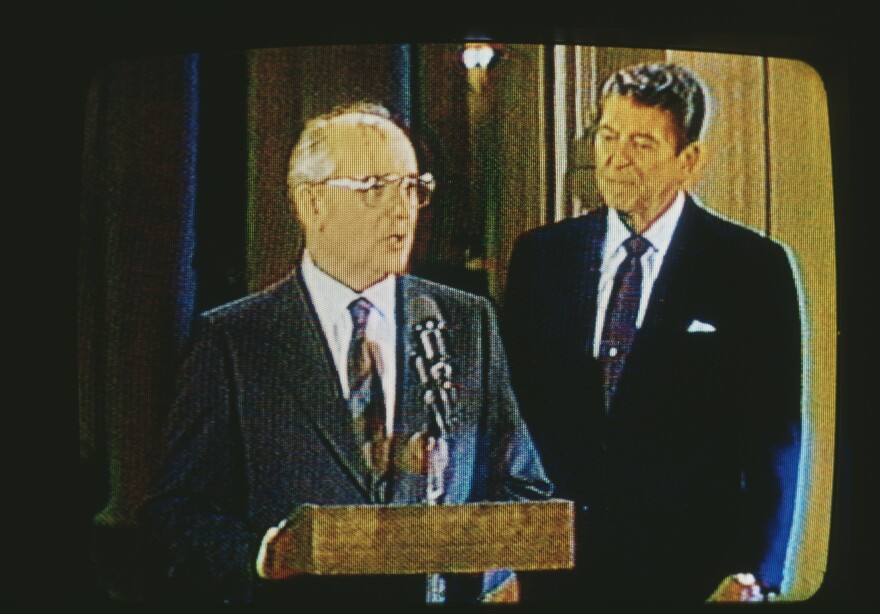Updated June 14, 2021 at 5:50 AM ET
This story was first published on July 14, 2018, and has been updated in advance of Wednesday's summit between President Biden and Russian leader Vladimir Putin.
Summits between U.S. presidents and Kremlin leaders are often filled with great drama and moments that shape history.
And then there's Boris Yeltsin's 1994 visit to Washington.
The Russian president was staying at Blair House, the guest quarters across the street from the White House. President Bill Clinton was hosting, and revealed years later that Yeltsin felt the urge to slip out late one night. He was well on his way when U.S. Secret Service agents found the Russian leader in his underwear, slurring his words and desperate for a pizza.

The larger point is that these summits — gravely serious or absurdly comical — tend to capture the mood or even define the relationship between Washington and Moscow.

Clinton and Yeltsin were famously chummy. Their conclaves were hug fests, befitting the moment. The Cold War had just ended, and they both saw cooperation as the way forward, even though they had substantial disagreements over issues such as NATO's expansion into Eastern Europe.
"They seemed to enjoy a close relationship," said Angela Stent, head of the Russian studies program at Georgetown University. "I think that just reflected that brief interlude in the 1990s when you had a Russian leadership that was pro-West and wanted to move closer to the United States. But that went away rather quickly by the end of Yeltsin's tenure."
Stent has followed the summits for decades and has met with Russian leader Vladimir Putin most every year since the early 2000s as part of a group of scholars invited to Russia.

At one such meeting in 2017, Putin "criticized the Americans. 'Why are you Americans so critical of your own president? You're not showing him enough respect. You should let him do his job,' " she quoted the Russian leader as saying, in reference to then-President Donald Trump. "Two minutes later, Putin was really lambasting American foreign policy and all the terrible things Americans were doing."
Putin and President Biden are set to meet Wednesday in Geneva at a time when U.S.-Russia friction is reminiscent of the Cold War. And that Cold War history teaches us that summits can be treacherous.

President John F. Kennedy was young and new to his office in 1961 when he met for two days in Vienna with the bombastic Soviet leader Nikita Khrushchev.
Kennedy was stoic in his public remarks afterward.
"I will tell you now that it was a very sober two days. There was no discourtesy, no loss of tempers, no threats or ultimatums by either side," Kennedy said.
But in private, Kennedy conceded that the Soviet leader "beat the hell out of me. I've got a terrible problem if he thinks I'm inexperienced and have no guts."
"Khrushchev reached an erroneous conclusion that John Kennedy was a pushover," said Dimitri Simes, head of the conservative Center for the National Interest in Washington.
"In this case, he has calculated wrong. He got an impression that if you really put pressure on President Kennedy, he would likely retreat," Simes said.

Two months after the summit, an emboldened Khrushchev gave the green light for East Germany to build the Berlin Wall, exacerbating an international crisis over the divided city.
The following year, Khrushchev shipped Soviet missiles to Cuba. The move pushed the superpowers to the brink of nuclear war before the Soviets agreed to withdraw their weapons.
While these summits were high-risk, Simes said no real alternative existed in an era when relations between the countries were extremely limited.
"In the case of the Soviet Union, if you wanted to talk to them, you would have to talk to the Kremlin," Simes said. "Summits were the only meaningful way to have any serious conversation with them."

The upside was that leaders could make things happen quickly.
At a 1986 summit in Iceland between President Ronald Reagan and Mikhail Gorbachev, the U.S. leader "was very skeptical about Gorbachev," Stent said.
"But they had this meeting, the first meeting, and they came out of it suddenly telling their aides, 'Oh, we've decided that we're going to abolish nuclear weapons by the year 2000,' " she said. "Their aides were absolutely shocked."
They never went that far. But they did sign an agreement the following year banning intermediate-range nuclear missiles. And they established the trust that kept tensions in check as the Soviet Union collapsed internally in the years that followed.
However, relationships based on trust haven't always worked. President George W. Bush initially thought he had connected with Putin.

"I looked the man in the eye. I found him to be very straightforward and trustworthy. We had a very good dialogue. I was able to get a sense of his soul," Bush said after he met Putin in 2001.
Relations quickly soured, and Bush was criticized as naive. President Barack Obama tried to reset relations, but that too ended in a downward spiral of mutual recriminations.
At a 2018 summit in Helsinki, Trump provoked a major controversy when he stood next to Putin and told a news conference that he believed the Russian leader when he said Russia didn't interfere in the 2016 U.S. presidential election. This view contradicted the entire U.S. intelligence community, which said Russia carried out a major operation to assist Trump.
In a statement on Thursday, Trump doubled down on his position from three years earlier.
"As to who do I trust, they asked, Russia or our 'intelligence' from the Obama era ... the answer after all that has been found out and written, should be obvious," Trump said. "Our government has rarely had such lowlifes as these working for it. Good luck to Biden in dealing with President Putin — don't fall asleep during the meeting and please give him my warmest regards!"
Greg Myre is a national security correspondent. Follow him @gregmyre1.
Copyright 2021 NPR. To see more, visit https://www.npr.org.



